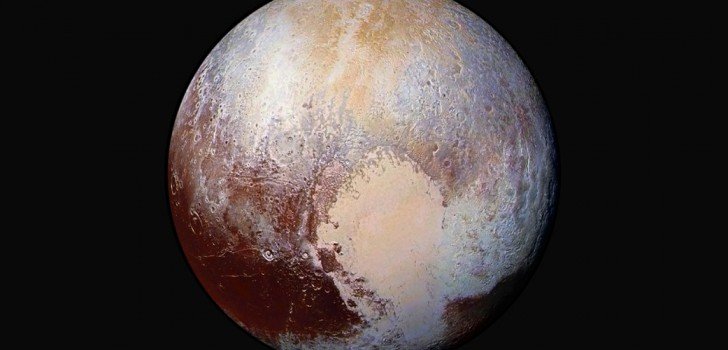After the successful approach to Pluto by NASA’s New Horizons spacecraft this July, the first high-resolution images of the icy planet have finally been received. The diverse nature of the Plutonian landscape has resulted in more questions than answers yet the scientists working on the mission are elated.
Those who remember the snail’s pace of 56 kbps dial-up modems should bear in mind that the photos from New Horizons were downloaded at a fraction of that speed – 2 kbps. The spacecraft is still transmitting the data from its flyby of the distant planet, and will take another year to complete.
Details from the photos have revealed what are suspected to be mountain ranges made of ice, as well as what appear to be dunes. Astronomer William B. McKinnon of Washington University commented on the photos, “Seeing dunes on Pluto — if that is what they are — would be completely wild, because Pluto’s atmosphere today is so thin. Either Pluto had a thicker atmosphere in the past, or some process we haven’t figured out is at work. It’s a head-scratcher.”
One clearly discernible feature of the planet is the Sputnik Planum, an icy plain named after the first artificial satellite launched from Earth. It is surrounded by darker terrain marked by craters and jagged peaks.
Three of Pluto’s five moons were also treated to a higher fidelity treatment by the NASA spacecraft, with photos of the largest, Charon, revealing a large fissure. Lead investigator for the New Horizons mission, Alan Stern, stated, “There are faults, or other kinds of tectonic features on the surface — big canyons, clear evidence that there was some evolution on the surface, not just things bombarding it from the outside.”
One theory is that Charon was formed following an impact event, with the four smaller moons resulting from the debris.
Stern expressed his astonishment at the new images, “’If an artist had painted this Pluto before our flyby, I probably would have called it over the top — but that’s what is actually there.”
As it transmits the remaining data on Pluto, the New Horizons spacecraft will travel further into space, now at a distance of over 3 billion miles from Earth.
Stay Connected



